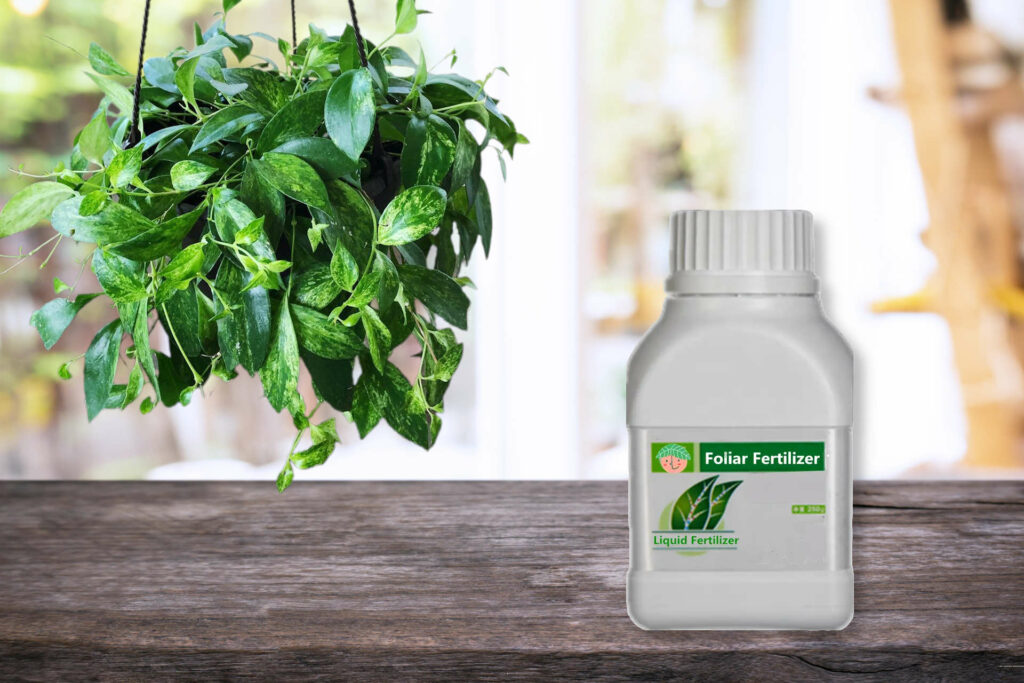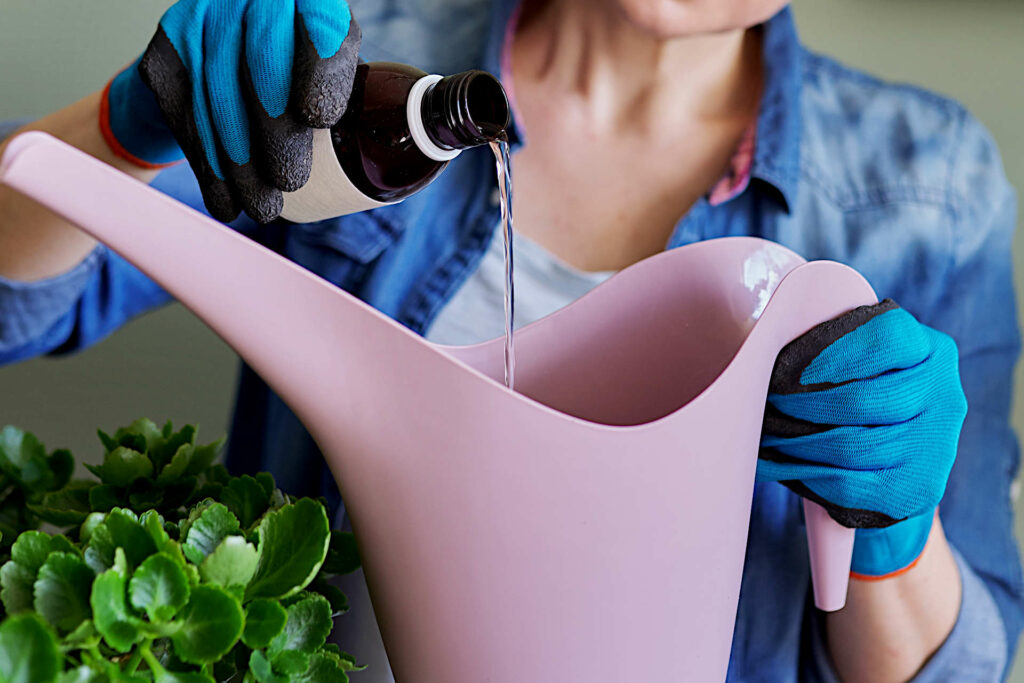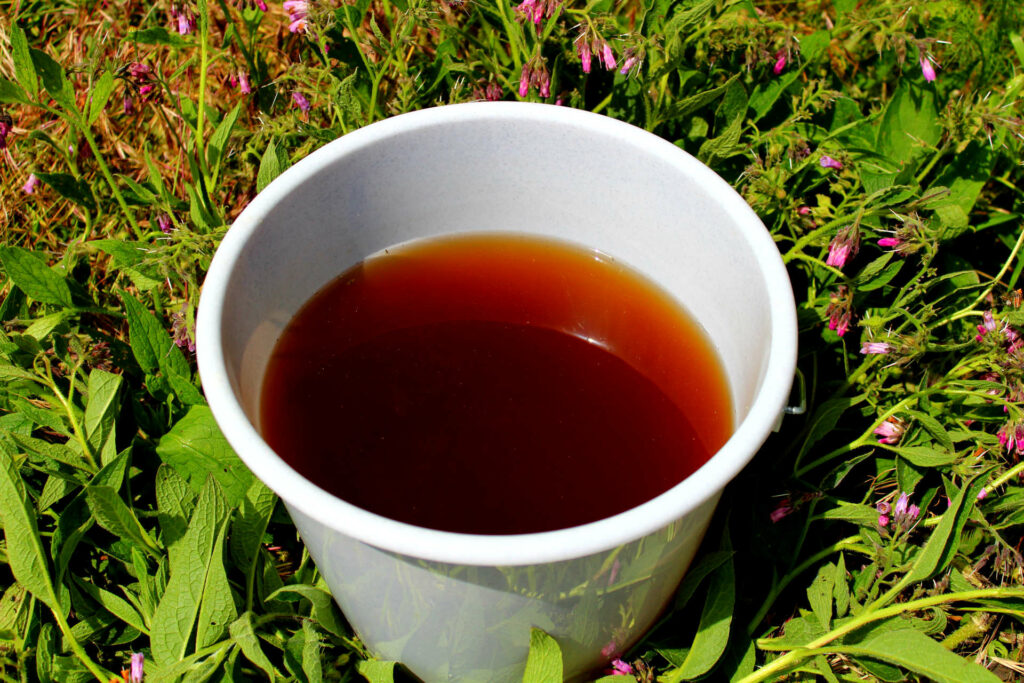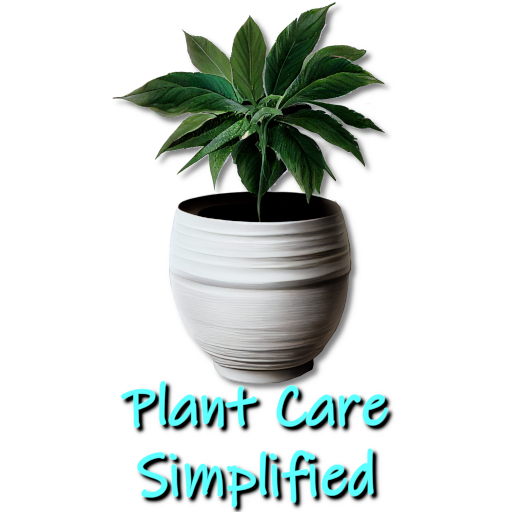What is the Right Fertilizer to Use for a Lipstick Plant
Kim is passionate about helping people create beautiful, healthy indoor spaces that are filled with plants. Kim believes that plants make us happier, healthier human...
- Nutritional Needs of Lipstick Plants: Lipstick Plants, native to Southeast Asia, require proper nutrition for healthy growth. They obtain nutrients from decomposing organic matter and rainwater in their natural habitat.
- Macronutrients and Micronutrients: Lipstick Plants require macronutrients like Nitrogen, Phosphorus, and Potassium for healthy foliage and flower development. Additionally, they need micronutrients such as Iron, Magnesium, and Zinc for optimal growth.
- Factors to Consider When Choosing Fertilizer: When selecting fertilizer, consider the NPK ratio (Nitrogen, Phosphorus, Potassium), whether it's organic or synthetic, slow-release or liquid, and the frequency of application to avoid over-fertilization.
- Recommended Fertilizers: The article recommends specific fertilizers like Espoma Organic Liquid Indoor Plant Food C and Jacks Classic No.1.5, along with guidelines for homemade/natural fertilizers. It also discusses common fertilization mistakes to avoid.
Like all plants, a Lipstick Plant (Aeschynanthus) requires proper nutrition to grow and thrive. But what is the best fertilizer to use for a Lipstick Plant?
Fertilization is an essential aspect of Lipstick Plant care, as it provides the plant with the necessary nutrients to support healthy growth, vibrant foliage, and abundant flowering.
Below, we will discuss the nutritional needs of Lipstick Plants, factors to consider when choosing a fertilizer, and some of the best fertilizers for these beautiful houseplants. We will also answer some commonly asked questions about fertilizing Lipstick Plants.
Understanding the Nutritional Needs of Lipstick Plants

Lipstick Plant’s Natural Habitat and Nutrient Requirements
Lipstick Plants are native to the humid rainforests of Southeast Asia, where they grow as epiphytes on trees or rocks. In their natural habitat, these plants obtain nutrients from decomposing organic matter and rainwater.
The Lipstick Plant is prized for their exotic appearance and ability to thrive in indoor environments. However, in order to provide the right growing conditions for an indoor setting, in particular, a well-draining potting mix and regular fertilization to meet their nutrient requirements.
The Role of Macronutrients in Lipstick Plant Growth
Macronutrients are nutrients that plants require in large quantities. The three primary macronutrients are Nitrogen, Phosphorus, and Potassium.
Macronutrients Required for Lipstick Plant
| Macronutrients | Role |
|---|---|
| Nitrogen | Nitrogen is essential for healthy foliage growth and is a key component of chlorophyll, the pigment that gives plants their green color. |
| Phosphorus | Phosphorus plays a crucial role in flower development and is necessary for healthy root growth. |
| Potassium | Potassium helps regulate water balance in plants and is important for overall plant health and stress tolerance. |
The Importance of Micronutrients for Lipstick Plant Health
In addition to macronutrients, plants also require micronutrients in smaller quantities. Some essential micronutrients for Lipstick Plants include Iron, Magnesium, and Zinc.
| Micronutrients | Role |
|---|---|
| Iron | Iron is necessary for chlorophyll production and helps plants maintain healthy foliage. |
| Magnesium | Magnesium is a component of chlorophyll and is important for photosynthesis. |
| Zinc | Zinc plays a role in plant growth and development and is necessary for healthy flower production. |
Factors to Consider When Choosing a Fertilizer for Lipstick Plants
When choosing a fertilizer for your Lipstick Plant, there are several factors to consider, including the NPK ratio, type of fertilizer, and fertilizing frequency.
Understanding NPK Ratios and Their Significance
The NPK ratio refers to the ratio of Nitrogen (N), Phosphorus (P), and Potassium (K) in a fertilizer. A balanced fertilizer with an equal NPK ratio (e.g., 10-10-10) provides equal amounts of each macronutrient and is suitable for general plant growth.
For flowering plants like Lipstick Plants, a fertilizer with a higher Phosphorus content (e.g., 15-30-15) can help promote flower production.
Organic vs Synthetic Fertilizers for Lipstick Plants
Fertilizers can be either organic or synthetic. Organic fertilizers are derived from natural sources such as compost, bone meal, or worm castings, while synthetic fertilizers are manufactured using chemical processes.
Both types of fertilizers can provide plants with essential nutrients, but organic fertilizers have the added benefit of improving soil health for the lipstick plant over time.
Slow-Release vs. Liquid Fertilizers
Fertilizers can also be classified as slow-release or liquid. Slow-release fertilizers release nutrients gradually over time, while liquid fertilizers provide an immediate supply of nutrients when applied.
Both types of fertilizers have their advantages: slow-release fertilizers require less frequent application, while liquid fertilizers allow for more precise control over nutrient levels.
Fertilizing Frequency and Dosage Recommendations
The frequency and dosage of fertilizer application will depend on the specific needs of your Lipstick Plant, such as whether you are propagating the Aeschynanthus from seed or cutting or dealing with a more mature plant. As a general rule, Lipstick Plants should be fertilized every 2-4 weeks during the growing season (spring and summer) and less frequently during the dormant season (fall and winter).
It is important to follow the manufacturer’s instructions for dosage and application to avoid over-fertilizing, which can damage the plant.
Best Fertilizers for Lipstick Plants

There are many fertilizers available that are suitable for Lipstick Plants. Here are some options to consider:
Fertilizer Option 1: Espoma Organic Liquid Indoor Plant Food C
Features and Benefits
Espoma Organic is an organic liquid fertilizer that provides essential nutrients for healthy plant growth. This fertilizer is easy to apply and releases nutrients gradually over time, reducing the need for frequent fertilization.
Recommended Application Method
To apply Espoma Organic, simply dilute the fertilizer concentrate as directed and sprinkle the recommended amount of fertilizer on top of the potting mix and water thoroughly.
Customer Reviews and Feedback
Customers who have used Espoma Organic report healthy plant growth, vibrant foliage, and abundant flowering. The only downside is that the fertilizer concentrate smells, but once mixed with water and applied, the smell goes dissipates quickly.
Fertilizer Option 2: Jacks Classic No.1.5
Features and Benefits
Jacks Classic No.1.5 is a liquid fertilizer that provides an immediate supply of nutrients to support healthy plant growth. This fertilizer is easy to apply and allows for precise control over nutrient levels.
Recommended Application Method
To apply Jacks Classic No.1.5, mix the recommended amount of fertilizer in water according to the manufacturer’s instructions and water the plant thoroughly.
Customer Reviews and Feedback
Customers who have used Jacks Classic No.1.5 say that the fertilizer provides strong plant growth, rich foliage, and plenty of blooms.
Recommendation for Homemade/Natural Fertilizer for Lipstick Plants

If you prefer to use a natural or homemade fertilizer for your Lipstick Plant, there are several options to consider, including compost tea, vermicomposting, or worm castings.
Ingredients and Preparation Method
To make compost tea, fill a bucket with water and add a scoop of compost or worm castings. Let the mixture steep for several hours or overnight, then strain out the solids and use the liquid as a natural fertilizer.
Application Guidelines and Tips
Compost tea can be applied to plants every 2-4 weeks during the growing season. Simply water the plant thoroughly with the compost tea solution.
Common Fertilization Mistakes for Lipstick Plants
When fertilizing Lipstick Plants, there are several common mistakes to avoid:
- Over-fertilizing: Applying too much fertilizer can cause nutrient imbalances or burn the roots, damaging the plant. It is important to follow the manufacturer’s instructions for dosage and application to avoid over-fertilizing.
- Using the wrong type of fertilizer: Choosing the wrong type of fertilizer can result in nutrient deficiencies or excesses. For example, using a fertilizer with a high Nitrogen content can promote foliage growth at the expense of flower development.
- Fertilizing at the wrong time: Fertilizing at the wrong time can also harm plants. For example, fertilizing during the dormant season (fall and winter) can stimulate growth when the plant should be resting.
How Can I Improve the Flowering of My Lipstick Plant Through Fertilization?
To improve the flowering of your Lipstick Plant through fertilization, consider using a fertilizer with a higher Phosphorus content (e.g., 15-30-15) to promote blooming. Additionally, providing the plant with essential micronutrients such as Iron, Magnesium, and Zinc can also support healthy blooming.
Signs of Nutrient Burn in Lipstick Plants
Nutrient burn occurs when plants receive too much fertilizer, resulting in an excess of nutrients. Signs of nutrient burn in Lipstick Plants include yellowing or browning of leaf edges, stunted growth, or reduced flowering. If you notice these symptoms, reduce the frequency and dosage of fertilizer application to avoid further damage.
Final Thoughts: What is the Right Fertilizer to Use for a Lipstick Plant
We have looked at the nutritional needs of Lipstick Plants, factors to consider when choosing a fertilizer, and some of the best fertilizers for these beautiful houseplants. We also covered common fertilization mistakes, ways to improve flowering through fertilization, and signs of nutrient burn in Lipstick Plants.
Recommendations for Fertilizing Lipstick Plants
Proper fertilization is essential for plant care for healthy Lipstick Plant growth. When choosing a fertilizer, consider factors such as NPK ratio, type of fertilizer, and fertilizing frequency to provide your plant with the necessary nutrients. If you feed and care for it properly, you can extend the lifespan of your Lipstick plant.
Videos
Commonly Asked Questions
Can I Use Regular Houseplant Fertilizer for My Lipstick Plant?
Yes, a regular houseplant fertilizer with a balanced NPK ratio can be used for Lipstick Plants.
How Often Should I Fertilize My Lipstick Plant?
Lipstick Plants should be fertilized every 2-4 weeks during the growing season (spring and summer) and less frequently during the dormant season (fall and winter).
Is It Possible to Over-Fertilize a Lipstick Plant?
Yes, over-fertilizing can damage plants by causing nutrient imbalances or burning the roots. It is important to follow the manufacturer’s instructions for dosage and application to avoid over-fertilizing.
Can I Use Foliar Feeding to Fertilize My Lipstick Plant?
Yes, foliar feeding (applying liquid fertilizer directly to the leaves) can be an effective way to provide plants with essential nutrients.
Are There Any Specific Signs of Nutrient Deficiency or Excess in Lipstick Plants?
Yes, nutrient deficiencies or excesses can cause symptoms such as yellowing leaves, stunted growth, or reduced flowering in Lipstick Plants.
Kim is passionate about helping people create beautiful, healthy indoor spaces that are filled with plants. Kim believes that plants make us happier, healthier human beings, and she loves sharing her knowledge with others so they can experience the joys of plant care for themselves. <a href="https://plantcaresimplified.com/kim-marson/">Read more</a>
More Posts